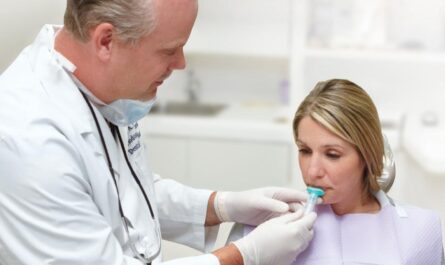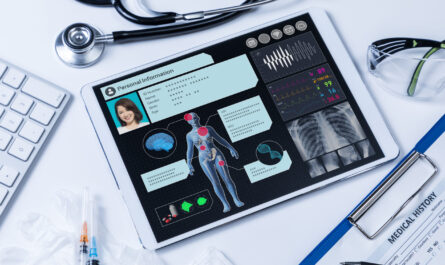What is Mammogram?
Mammogram is a specific type of breast imaging that uses low-dose X-rays to detect breast changes in women. Also known as a mammogram, this screening test allows doctors to find small breast cancers early before they become large enough to feel or cause symptoms. The goal of screening mammogram is to find breast cancer when it is most treatable, which improves patient outcomes.
How Mammograms Work
A Mammography is generally performed by placing the breast on the mammogram machine. The breast is compressed by the machine to spread out the tissue so that it can be clearly seen on the X-ray images. Typically, two images are taken of each breast – one from the top and one from the side. The entire process of undergoing a screening mammogram takes about 30 minutes.
Once the images are captured, a breast radiologist examines them looking for any abnormalities. The radiologist compares the current images to past ones, if available, to check for any changes over time. Common signs they look for include masses, distortions in breast tissue, or calcifications. These can indicate pre-cancerous conditions or early-stage breast cancers.
Benefits of Screening Mammography
Regular mammograms are considered the most effective screening tool for early breast cancer detection. Some key benefits of screening mammogram include:
– Detects breast cancers even before a lump can be felt. Screening mammograms can find breast tumors that are too small to feel but still need treatment.
– Improves chances of survival. Cancers detected through screening Mammography are typically caught at an earlier stage when treatment is less extensive and more effective. These patients have a better prognosis.
– Reduces breast cancer mortality. Large clinical studies have shown that regular screening mammogram can significantly reduce breast cancer mortality rates by detecting cancers early when survival rates are highest.
Who Should Get Screened?
The American Cancer Society recommends that women at average risk of breast cancer should get yearly mammograms starting at age 45. Some other guidelines are:
– Ages 40-44 – Women have the option to start screening mammograms earlier. The decision should be individual based on risk factors and patient preference after discussing benefits and limitations with their doctor.
– Ages 45-54 – Annual screening mammograms are recommended.
– Ages 55 and older – Screening mammograms every 2 years are recommended. Some women may still opt for annual screening.
– High risk women – Those with a strong family history of breast cancer or known genetic mutations should speak to their doctor about beginning screening earlier or being screened more often than yearly.
Screening Limitations and False Results
While mammography has greatly improved breast cancer detection, it is not perfect. Some limitations include:
– False positives – Additional imaging or biopsies may be needed when mammograms appear abnormal but turn out to be non-cancerous after further testing. This causes unnecessary anxiety in about 10% of screened women.
– Dense breasts – Women with very dense breast tissue on mammograms, which is common in pre-menopausal women, are at increased risk of breast cancer but tumors can be harder to detect on mammograms.
– False negatives – Rarely, mammograms fail to detect an existing cancer in about 1-10% of women who are screened. Factors such as radiographic density, tumor characteristics and individual variations can impact detection.
– Overdiagnosis – Occasionally cancers detected on screening mammograms would never have caused symptoms or death in the patient’s lifetime if left undetected. These cases are considered overdiagnosed.
– Radiation exposure – While the amount of radiation from a single mammogram is very small, some experts are concerned about the cumulative effects of radiation exposure over multiple screenings during a woman’s lifetime. However, the benefits of early detection are considered to outweigh these risks for most women.
New Technologies
With advances in breast imaging, new technologies aim to improve cancer detection compared to traditional 2D mammograms. Digital breast tomosynthesis or 3D mammogram provides 3D images of the breast with thinner slices which may help detect hidden tumors. Breast MRI is also useful for high risk women but is typically not recommended for general screening due to higher costs and lower availability. For women with dense breasts, breast ultrasound or molecular breast imaging may help find cancers mammograms miss. More research is still needed on these newer modalities though.
mammography remains one of the most effective screening tools for early breast cancer detection available today when used according to recommended guidelines. It has been proven to decrease mortality by finding cancers at the earliest possible stages. Overall, the benefits of regular screening mammograms for eligible women are considered to outweigh the limitations by most medical organizations. Early detection through mammogram saves lives.
*Note:
1. Source: Coherent Market Insights, Public Source, Desk Research
2. We have leveraged AI tools to mine information and compile it.
About Author:
Ravina Pandya, Content Writer, has a strong foothold in the market research industry. She specializes in writing well-researched articles from different industries, including food and beverages, information and technology, healthcare, chemical and materials, etc. (https://www.linkedin.com/in/ravina-pandya-1a3984191)




